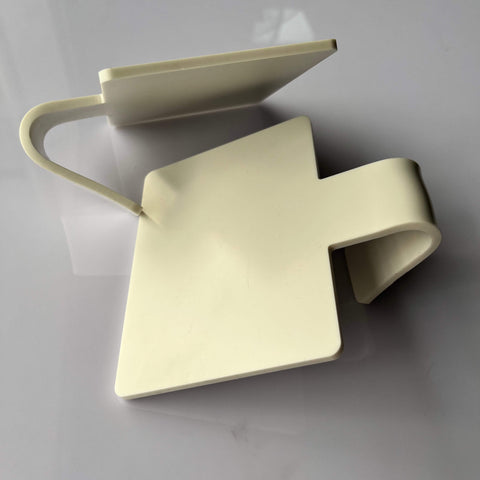Bending ABS Plastic: A Comparison of Thermoforming, Hot Bending, and Cold Bending

Ready to Try Your Preferred ABS Bending Method?
Get the Right Materials First! Explore our range of premium ABS sheets and rods.
- 🔥 Heat-resistant and impact-tough formulas
- 📐 Available in 2mm - 30mm thicknesses (Cut-to-size)
- 🎨 Color choices: Natural, Black, White
- 🛒 Bulk and small-quantity options
An Introduction to Bending ABS Plastic
ABS is an incredibly versatile thermoplastic polymer with properties that make it suitable for bending into custom parts and products. Some key traits of ABS plastic include:
Thermoforming ABS Plastic
Key benefits of thermoforming include:
- Produces uniform, consistent bends in the ABS plastic.
- Heat is evenly distributed so the entire sheet reaches optimal forming temperature.
- No leftover stresses in the material after cooling that could cause cracking.
- Smooth surface finish and accurate reproduction of the mold shape.
- Ideal for prototyping and short production runs. Lower tooling costs than injection molding.
- Allows very tight inside radii and complex bends in the plastic.
- Dimensional stability. The bend radius and angles maintain their form once cooled.
- Can form many parts quickly through gang forming or rapid tooling changeovers.
Thermoforming does come with some downsides to consider as well:
- Requires a high initial investment in thermoforming machinery and the forming molds.
- Limited to relatively thin-gauge ABS sheets, usually under .120” thickness.
- Only suitable for short-moderate production runs, not extremely long runs.
- Additional secondary finishing work may be needed after forming.
- Relatively slow process compared to other methods. Cycle times range from 30 seconds to 30 minutes.
Thermoforming has some key advantages in working with ABS plastic since it can heat and form the material into complex or tight bends without damage. It is the ideal choice when consistent, wrinkle-free high-quality bends are needed for prototypes or short-run production.
Hot Bending ABS Plastic
Key benefits include:
- Allows bending the ABS sheet to tighter radii than is possible with cold bending.
- Lower risk of material stress and cracking during and after the bend.
- Bends have a smooth, rounded contour rather than a sharp V-shape.
- Ideal for relatively short, straight bends rather than complex curving shapes.
- Faster process than thermoforming and lower equipment costs.
- Enables bending thicker sheets up to .25” thickness.
- Small lot sizes and prototypes can be bent using simple heat guns.
Hot bending does require some precautions and disadvantages to consider:
- More labor-intensive process since heat must be continually applied during bending.
- Risk of overheating or burning the ABS material if temperature isn’t controlled.
- Cooling and setup of the bent shape takes time.
- Requires appropriate heating equipment based on volume - from heat guns to ovens.
- Precise process control needed to avoid under/over heating.
- Some trial and error may be needed to find ideal heat settings.
- Works best for short, gentle bends rather than multiple or complex shapes.
Overall hot bending is ideal for gently contouring ABS sheets up to .25” thick when you need tighter bend radii and less cracking risk than cold bending. It offers the versatility to bend small custom or short-run components using a heat gun or batch bend higher volumes in an oven or thermal box.
Cold Bending ABS Plastic
Unlike thermoforming and hot bending, cold bending does not apply heat during the bending process. The ABS plastic sheet is bent at room temperature using tools like presses, brakes, or mandrels.
Comparing the Tradeoffs of Each Bending Method
Finding the Right Bending Technique for Your ABS Application
As this comparison shows, thermoforming, hot bending, and cold bending all have their own advantages and limitations when working with ABS plastic sheets. The right method for your application depends on factors such as:
- Production quantity (prototypes, small lots, longer runs)
- Sheet thickness and bend radii needed
- Equipment available
- Level of precision and process control required
- Secondary finishing time
Most importantly, consult with your chosen ABS sheet manufacturer and plastic specialist when selecting a bending technique. An experienced ABS forming company can recommend the ideal process based on your product goals, provide technical advice, and help you avoid common pitfalls.
At Bee Plastic, our team has specialized in custom ABS plastic thermoforming, bending, and fabrication for over 20 years. Contact us today to request a quote or discuss your unique ABS plastic bending needs.
Need Custom-Bent ABS Parts? We Can Help You Skip the Tools
Not sure which bending method to choose — or just need perfectly shaped ABS parts fast? Let our fabrication experts handle it for you.
- 📎 Upload your design files or send a sketch
- 🔧 Choose hot bending, thermoforming, or cold bending — we handle it all
- 📦 Parts delivered pre-bent, ready for use
- 📞 Ideal for enclosures, guards, brackets, trays & more
If you are interested in using ABS Plastic in your project or want to know more information, welcome to harass us. We are a professional supplier and manufacturer of all kinds of plastic custom processing and production, with a professional team of engineers and precision equipment, we can provide you with customized plastic solutions that meet your specifications and budget. We are happy to serve you and help you fulfill your needs. Do you need a free quote or help with any questions or materials?
Use code: QR4GNY08SHVR at checkout and enjoy a special discount on your entire order! 👉 Shop ABS plastic
Our website: www.BeePlastic.com
Click to contact: Custom ABS Plastic
-
Posted in
ABS plastic, ABS plastic hot bending, ABS rod bending techniques, ABS rod shaping, ABS thermoforming, ABS thermoforming guide, bend ABS plastic, bend ABS sheet, cold bend ABS plastic, cold bending ABS, custom ABS processing, DIY ABS plastic bending, hot bending ABS, how to shape ABS sheet, plastic sheet forming, thermoforming guide
















